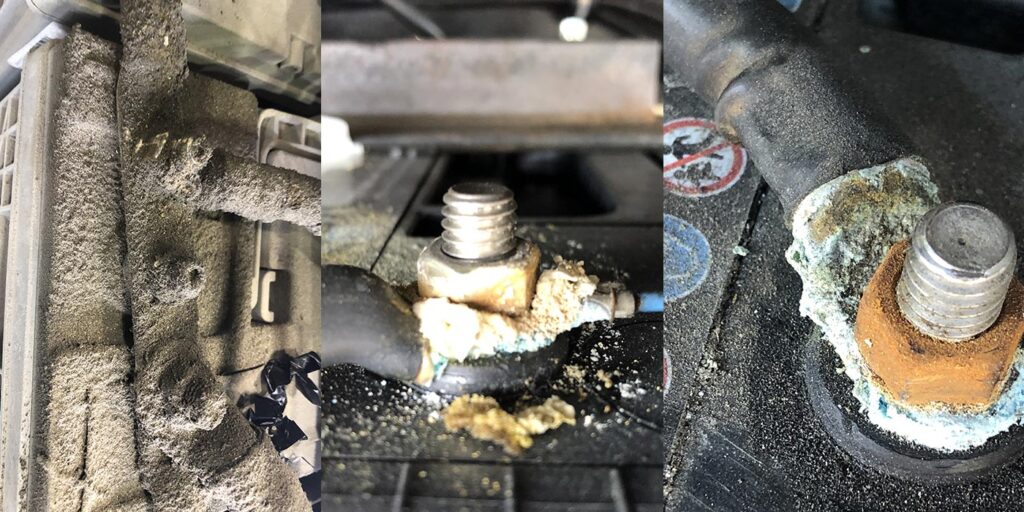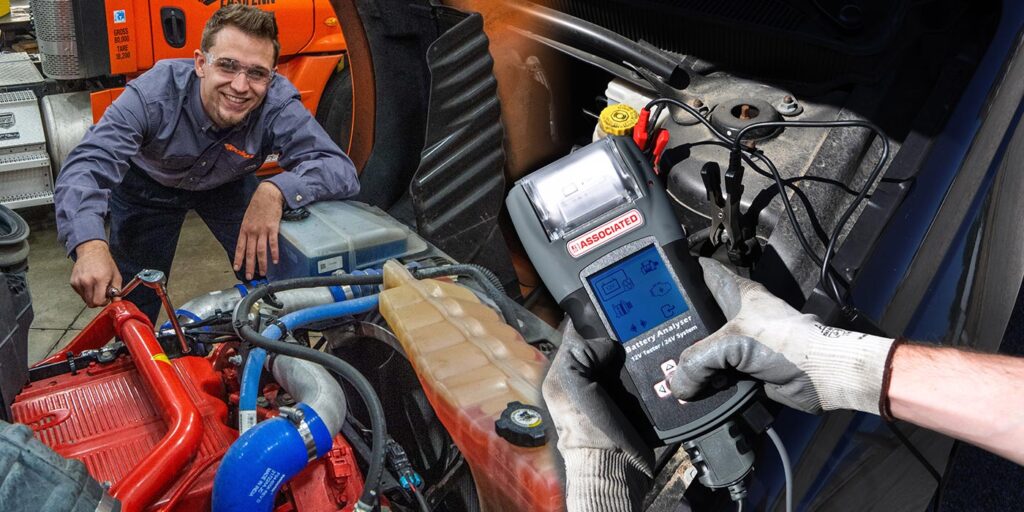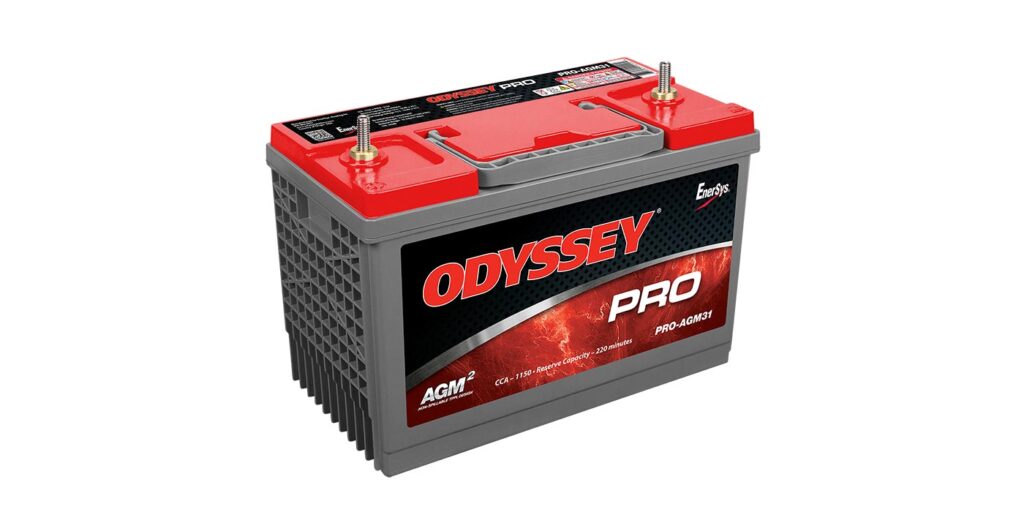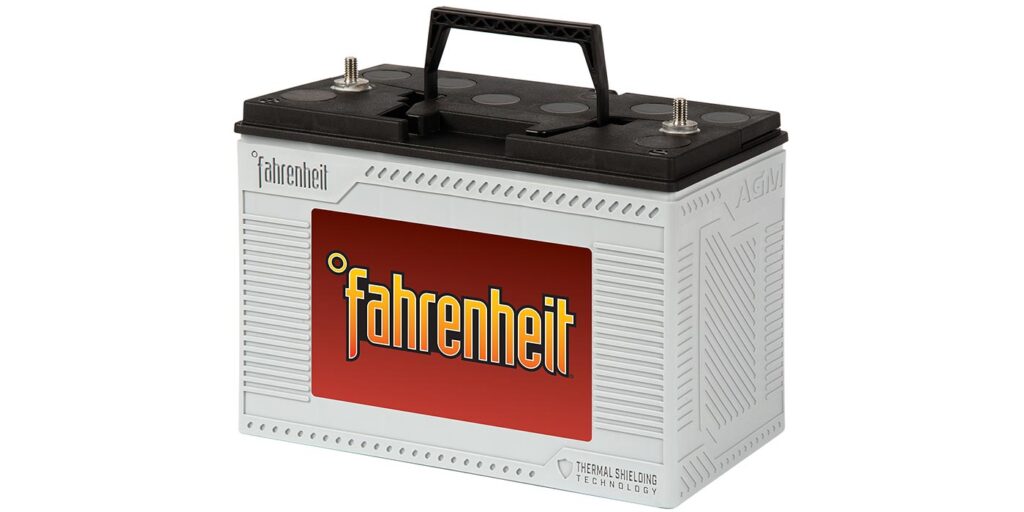Among the many truck components that fall victim to the harsh winter, one of the most prominent is the battery. No-starts, freezing: it’s hardly an exaggeration to say that a dead battery is a death sentence for that truck’s uptime and productivity. Contrary to what many believe, the time to avoid winter’s effects on the truck’s batteries is actually in the summer.
“The damage done from the heat and vibration of summer use will reveal itself in winter’s cold,” warns Steve Keuss, chief engineering manager at Associated Equipment Corp.
“Winter always shows us summer damage to batteries,” says Jeremy Cordray, director of technical sales-transportation markets for Odyssey Battery. “Heat over the summer causes fleets to more deeply discharge the batteries to cool the cab while the heat also causes damage to the electrochemistry of the battery. As the weather cools, the loads on the batteries are reduced, but the damage from the summer is still there.”
You may wonder, if the damage is being done in summer, why does it not show itself until winter? The answer has to do with how much more work it is to start a truck in cold climates in the winter.
“When batteries are cold they lose a substantial amount of their starting capabilities,” Keuss says. “At 32°F they can drop 35% of their capacity and can lose up to 60% at 0°F. Add this to the fact that as the engine gets colder it actually takes more current to start it. Starting current could be more than double at 0°F. The battery may also be called into service for heating fuel before starting and for cab comfort when not running.”
Larry Rambeaux, sales application engineer with Purkey’s, provided a colorful analogy:
“Think of batteries like a cup of coffee in warmer months: easy to fill and easy to pour out. In wintertime they are more like a tube of toothpaste: Hard to get out and almost impossible to put back in.
“Drivers still want to have and use their comfort devices, but with limitations either by law or company policy, the engines aren’t always running enough to put the energy back in that was taken out during non-driving hours.”
According to Jeff Muir, director of original equipment sales, commercial and outdoor power equipment with East Penn, the cold makes everything about starting a truck more difficult and less efficient, which means batteries will need to work harder to crank the engine.
“This is especially true,” he continues, “after a long, hot summer. Summer heat accelerates battery aging, weakening battery performance. This can be deadly when winter hits, leaving you stuck with an unexpected replacement and downtime.”
Odyssey’s Cordray notes that the winter also brings the need for more cranking ability to start the truck, which can highlight the reduced capacity that developed over the summer months. In the winter months, the biggest battery challenge can be no-starts.
“Basically, anything besides peak performance in the winter could lead to a costly service call for jump starting or battery replacement,” Keuss says.
How to keep your batteries in the best shape for winter

So, how can these issues be resolved? The battery experts interviewed for this story offered the following list of good practices for the summer, winter and all year round:
1. Choose the right battery for the application.
The least expensive battery is not always the right call, Odyssey’s Cordray notes.
“Battery technologies have drastically advanced in recent years, allowing fleets to find energy storage solutions that meet the increasing demands of today’s fleets,” he goes on. “When you are faced with a no-start this winter, it happens for a reason, so don’t just swap the batteries and send the truck on its way. Instead, be sure to have the charging system, including the batteries, analyzed to identify the reason for the failure and to create the best solution to prevent the issue from arising again. The only thing worse than a no-start is two no-starts.”
2. Make sure your batteries are fully charged and connections are tight and clean.
“Batteries operating in a partial state of charge may not have enough energy to turn over a truck,” East Penn’s Muir says. “The cold makes it even more difficult, which can take a toll on a battery that’s not fully charged. Maintaining a healthy battery through proper recharging procedures will maximize the starting events all year round.”
3. Properly test the cables on the truck.
“You can have the best batteries,” Purkey’s Rambeaux says, “but if the cables are damaged or corroded, you can’t get the energy from the batteries to the starter nor can you get the energy from the alternator back into the batteries to be ready for the next crank.”
4. Include a battery check in regular maintenance.
“Fleets should include a battery check with a smart charger/analyzer to detect weak or defective batteries as part of service procedures every time a vehicle is in the shop for service,” Associated Equipment’s Keuss recommends. “Many fleets include the battery check as part of every service procedure to minimize any downtime due to battery issues.”
















